
Sharpening Knives
-
-
Why Does Only Japan Have a Culture of Sharpening Knives with Whetstones?
In this video, we explore how Japan’s blessed geography and geological layers produce rare natural whetstones, and how this has shaped the enduring tradition of sharpening with stones.
-
— A Unique Blend of Geology, Spirit, and Aesthetics That Created a One-of-a-Kind Blade Tradition
How do you maintain your kitchen knives in your country?
In many places, when a knife gets dull, the common practice is simply to replace it.But in Japan, knives are “nurtured through sharpening.”
And this sharpening is far more than routine maintenance — it is a deeply rooted culture and philosophy passed down for centuries.
Why did only Japan develop such a rich whetstone sharpening culture?
The answer lies in a remarkable combination of geological miracles and the spirit of skilled artisans. -
■ A Gift from the Earth: Japan, the Land of Unparalleled Natural Whetstones
Japan sits at the convergence of four tectonic plates, creating unique geological conditions.
Over hundreds of millions of years, ancient sedimentary layers were pushed near the surface,
giving access to rare and extraordinarily high-quality natural whetstones found almost nowhere else on Earth.Particularly in the Kyoto region, famous natural stones like Nakayama, Okudono, Maruoyama, and Aoto are revered.
Among these, Kyoto’s finishing stones are considered the ultimate.
These stones naturally produce a fine slurry during sharpening, acting as a polishing compound that both sharpens and refines the blade.
The result is a finish that is not only highly functional but also beautifully polished. -

■ Why Other Countries Could Not Develop This Culture — Due to Geology
Natural whetstones do exist worldwide —
Arkansas stones in the U.S., Ardennes Coticule in Belgium, among others.
However, these stones are often too hard, too coarse, or otherwise unsuitable for the delicate finishing that Japanese whetstones excel at.In addition, Europe’s geologically stable conditions mean ancient strata rarely surface, resulting in limited whetstone resources.
This scarcity contributed to a culture where knives are more often replaced or industrially maintained, rather than carefully sharpened by hand. -
■ The Japanese Spirit: Tools as Partners in Craftsmanship
The other key to Japan’s whetstone culture is the unique relationship Japanese people have with their tools.
A knife is not just a tool —
it is an extension of the chef’s body, and a trusted companion for craftsmen.Sharpening is therefore not mere maintenance — it is a quiet ritual of gratitude, mindfulness, and preparation.
This attitude resonates with other Japanese arts such as Zen meditation and the tea ceremony. -

■ The Beauty and Philosophy Embedded in Sharpening
Japanese sharpening culture aims to balance functionality with aesthetic beauty.
It’s not enough for a blade to just be sharp.
The blade patterns (hamon), the subtle polishing marks left by the whetstone, and the mirror-like finish are all reflections of the sharpener’s skill and artistic sense.
Together, they elevate a simple kitchen tool into a work of art. -
■ Bringing Japanese Tradition to Your Kitchen — The Essence of KIREAJI
The exceptional sharpness and durability of KIREAJI knives are the crystallization of Japan’s unique geological environment and its rich whetstone culture.
Owning a KIREAJI knife means more than just having a “sharp knife.”
It means welcoming Japanese craftsmanship and culture into your kitchen.For those who want to elevate their cooking skills or enjoy daily cooking more,
KIREAJI knives are far beyond mere tools.They are a way to engage with, appreciate, and experience Japanese traditional crafts in your everyday life.
-

A journey of beauty and mastery begins in your kitchen.
With KIREAJI, embark on the elegant art of sharpening and discover the soul of Japanese tradition.
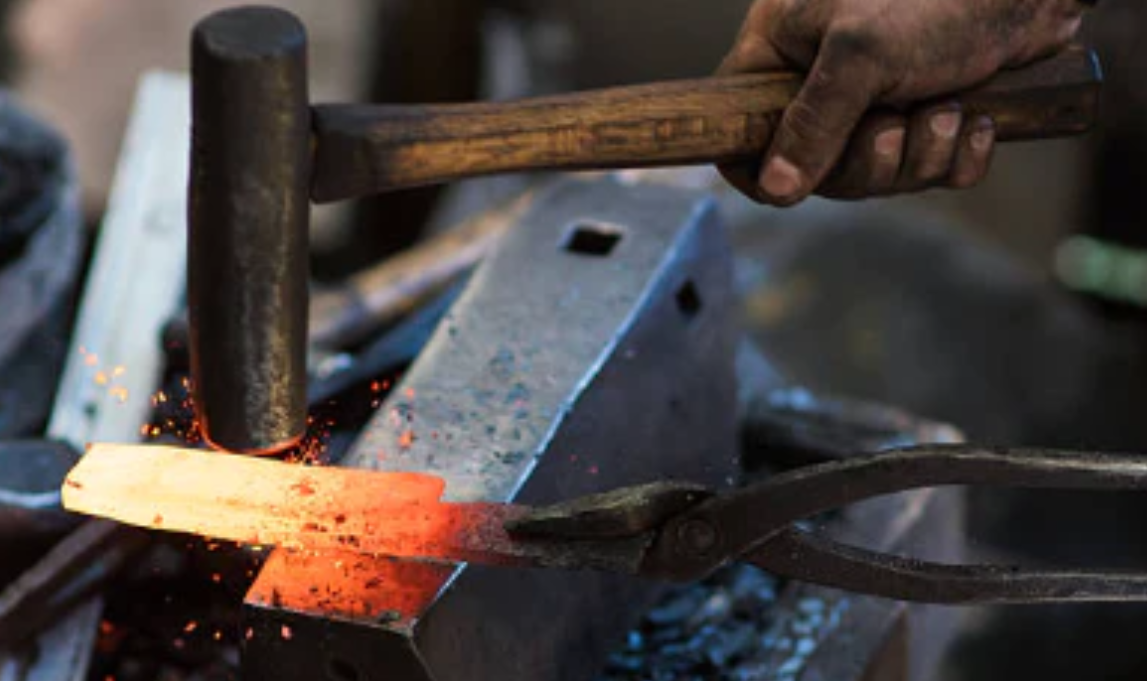
Ⅰ. Before Sharpening Knives
-
-
In this section, we will cover essential knowledge for anyone who sharpens knives. By keeping these points in mind, you'll find it easier to address any questions or issues that may arise during the sharpening process.
-
1.The Importance of the Backside on Single Edge Knives
For single-edged knives, the role of thebackside—shaped by the back pressure during sharpening—is crucial for achieving optimal sharpness. The back of a single-edged knife features a specific design called"ura-suki,"where part of the steel is removed toreduce cutting resistanceandsimplify sharpening.
-

-
This design is only effective if the back edge is properly maintained. Ideally, the back edge should be very thin, typically less than0.5mm, known as a "thread back."Oversharpeningthe backside can thicken this edge unnecessarily, increasing resistance when cutting ingredients and consequently reducing the knife’s sharpness. This principle also applies to other types of knives, like theDeba, which is used for cutting hard materials. Here, a slight thickening of the back edge can helpprevent chipping. Adjusting the edge based on its intended use is crucial for maintaining the knife’s effectiveness.
-
2. The Chef's Defense is on the Surface
Single-edged knives feature what is called"ura-suki"on the back, which is crucial for sharpness. It is generally fine to lightly press to maintain a clean back edge. However, with prolonged use, there is a risk that the back edge mightspread and become dulldue to excessive pressure, or it might not contact the whetstone properly due to distortion or other issues. In such cases,specialized equipment is needed to correct the back grinding.
-

-
This falls under "repair," not "sharpening," and is typically beyond even professional chefs' expertise. Similarly, if a blade is badly chipped, it is advisable tosend it for repairrather than attempting to fix it with a rough whetstone.Regular sharpeningis crucial for honing one's skills, but understanding the limits of what can be achieved at home and knowing when to seek professional help is important. It is also wise tokeep several knivesof the same type on hand in case of problems.
-
3. Setting Sharpness Goals
The goal of sharpening a knife is to achieve a level of sharpness that is appropriate for its intended use. While ideally, all knives should be sharp to preserve the taste, texture, and quality of food, an extremely sharp edge is not always necessary in the kitchen.
-

-
For instance, knives used for cutting hard materials, such asDebaandGarasaki, are prone tochippingif the edge is overly sharp. This can compromise the blade's sharpness, necessitating frequent re-sharpening to repair the damage. Moreover,over-sharpeningother kitchen knives can significantly alter the feel compared to the knife you use daily, which could negatively impact yourwork efficiency. It is important to consider the degree of sharpness that suits your specific needs and motions. One of the objectives in sharpening should be toavoid excessive sharpness.
-
4. Understanding "Kaeri"
In sharpening, the terms"Kaeri," "Ha-gaeri,"and"Bari"all refer to the same phenomenon: aflake of metalthat forms at the tip of the sharpened edge. As a knife is sharpened, the edge becomes thinner, and if sharpening continues, this metal flake appears on theopposite sideof the sharpened surface.
-

-
The presence of "Kaeri" indicates that the sharpening work at that stage is complete. However, having a lot of these flakes is not necessarily beneficial.Excessive "Kaeri"can lead to unnecessary removal of blade material, socautionis needed. Additionally, as the sharpening process nears completion, the amount of metal being removed decreases, and the "Kaeri" will tend to becomesmaller. It is important to bevigilantand not overlook this sign.
-
5. What to Do with the "Mud" That Comes Out of the Sharpening Process
Sharpening knives produces a substance commonly referred to as "mud," which is actually a mixture of metal particles from the knife and abrasives from the whetstone. Many experienced sharpeners advise not to wash this mud off the whetstone during the sharpening process. The mud itself possesses abrasive properties that can enhance the sharpening, making the process quicker and more efficient.
-

-
However, managing this mud can be challenging. Too much mud may lead to unintentional sharpening of parts of the blade that should remain untouched, making it difficult to precisely control the blade's edge. To address this, some opt for "running water sharpening," where the mud is rinsed off during sharpening, which is particularly useful for fine-tuning the edge as it relies solely on the whetstone's abrasive power. Effectively adjusting the amount of mud and switching to running water sharpening when necessary can optimize the sharpening results.
Ⅱ. Selecting the Right Whetstone Grit
-
-
The process of achieving a sharp knife starts with choosing the correct whetstone. The grit of the stone influences the sharpness and polish of your blade:
-

- Rough Stones (240-600 Grit):
Suitable for repairing damaged edges or creating a new edge. These stones remove material quickly and efficiently. - Medium Stones (800-2,000 Grit):
Ideal for refining your blade's edge. This range of grit smooths out the roughness left by coarser stones and prepares the edge for final polishing. - Finishing Stones (3,000-8,000 Grit):
Used for achieving a mirror-like polish and an exceptionally sharp edge, ideal for precise cuts.
- Rough Stones (240-600 Grit):
-
Remember, grit numbers might vary between manufacturers, so it's important to follow the guidelines specific to your whetstone brand.
Ⅲ. Step-by-Step Knife Sharpening with a Whetstone
-
-

-
1. Assess Your Blade:
Before sharpening, inspect your knife for any chips or nicks to ensure a smooth edge. -
2. Soak or Wet Your Stone:
Water acts as a lubricant, reducing friction and preventing heat build-up that can damage the knife. Ensure your stone is adequately moist, whether soaked or wet during use. -
3. Find Your Angle:
The angle between your knife and the stone is crucial for effective sharpening. Typically, this is between 20-30 degrees, but it can vary based on the knife and personal preference. Consistency in maintaining this angle is key. -
4. The Sharpening Motion:
With gentle pressure, glide your knife back and forth over the stone, maintaining your angle. Use smooth, even strokes for the best results. Flip the knife periodically to sharpen both sides evenly. -
5. Clean and Dry:
After sharpening, rinse and dry your blade and whetstone to ensure they are clean and ready for next use.
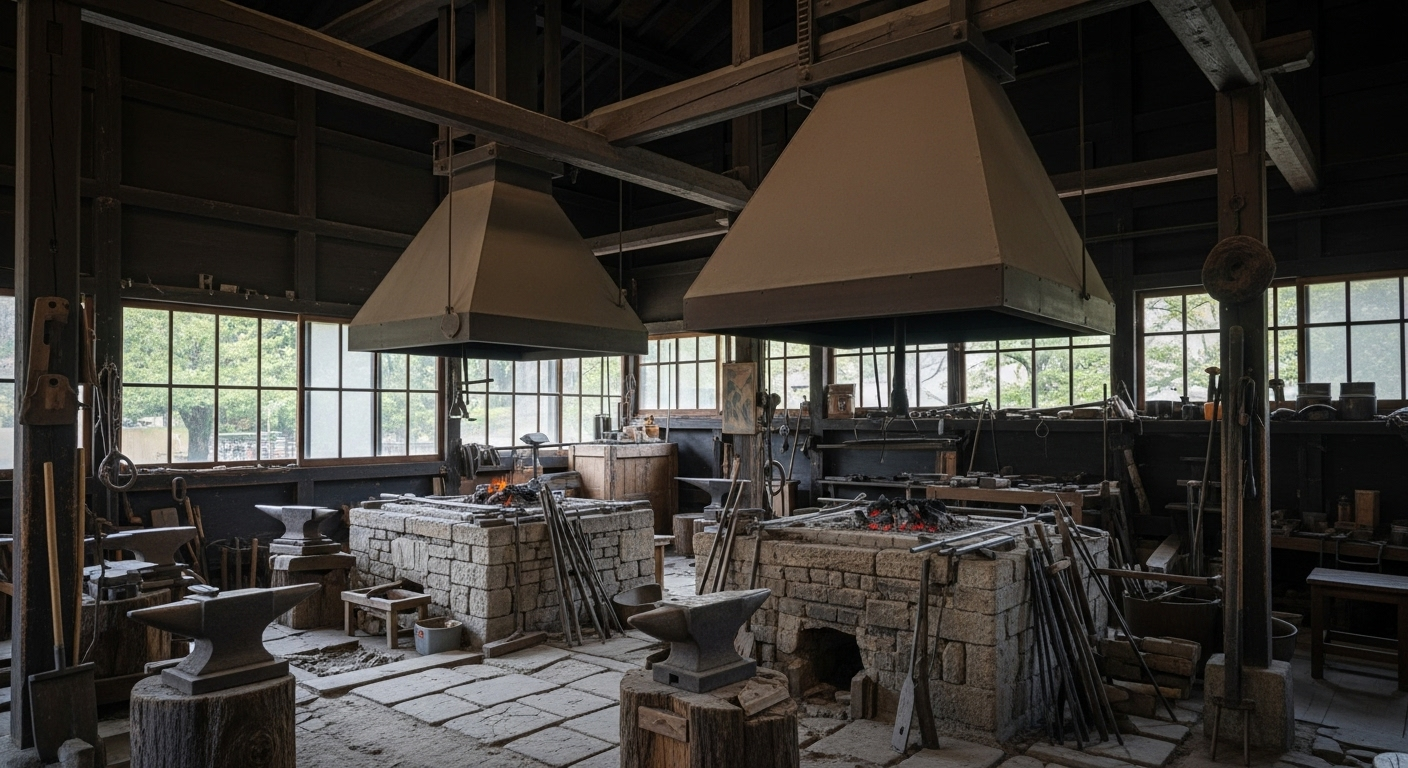
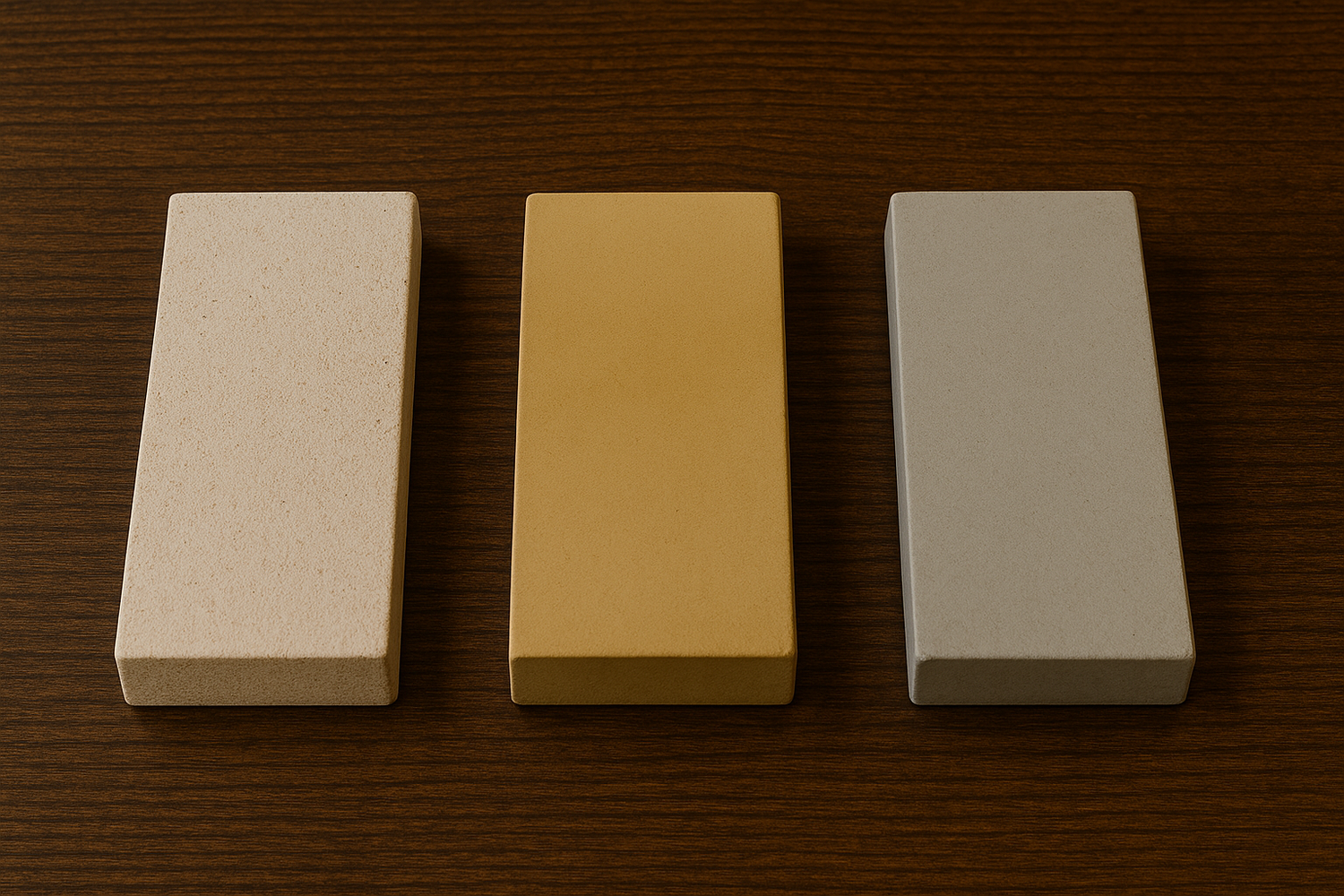
Type of Whetstone
When you acquire a good knife, it's equally important to find a suitable whetstone to mWhen you acquire a good knife, it's equally important to find a suitable whetstone to maintain it. In this section, we will explore theimportanceandrecommended frequency of usefor various types of whetstones.
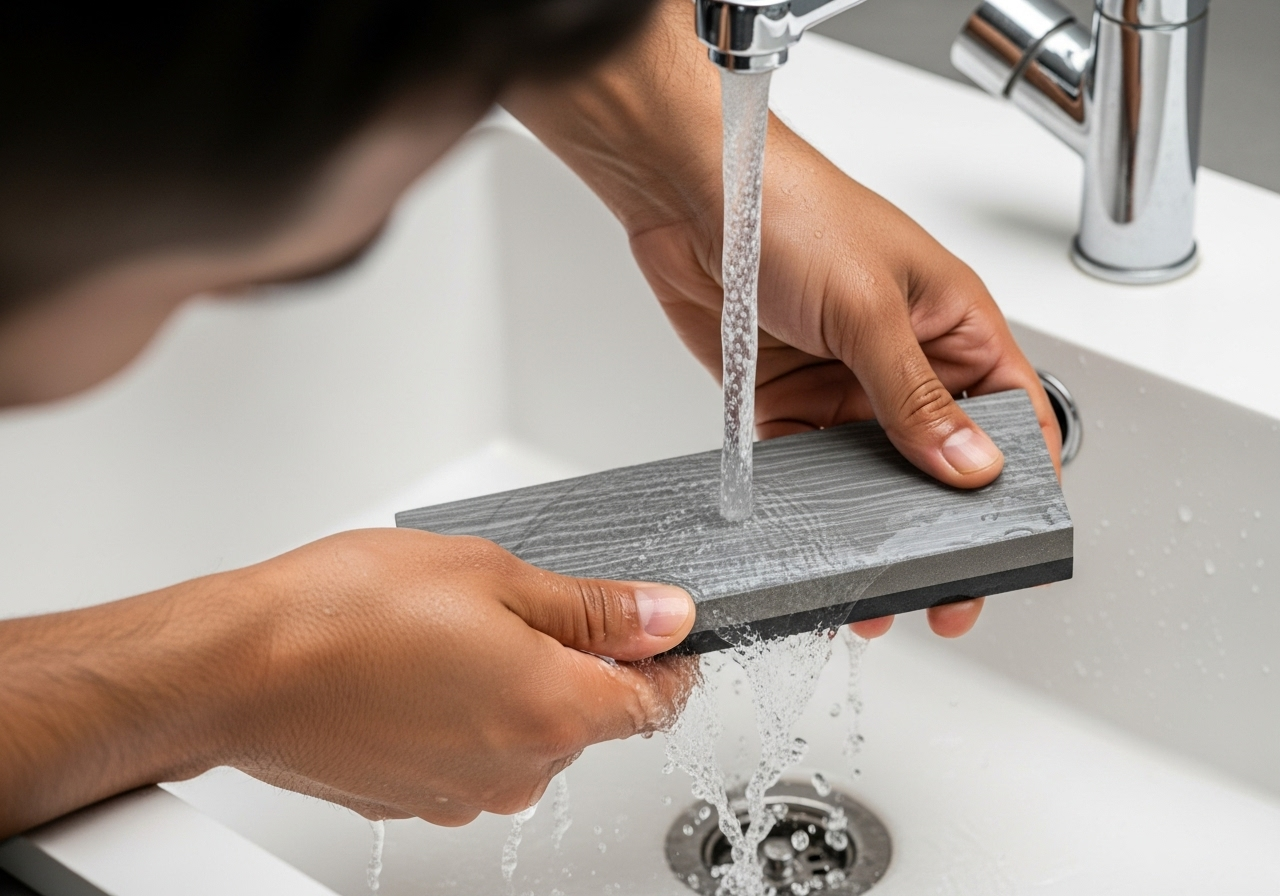
Daily Care of Whetstone
While whetstones are crucial for knife maintenance, you might wonder if they require any special care themselves. Although they generally do not need much attention, the most serious issues they can encounter—akin to rust on knives—are warping and denting. It's important to know what to watch for to prevent these problems and ensure your whetstone remains in good condition for clean and effective use.
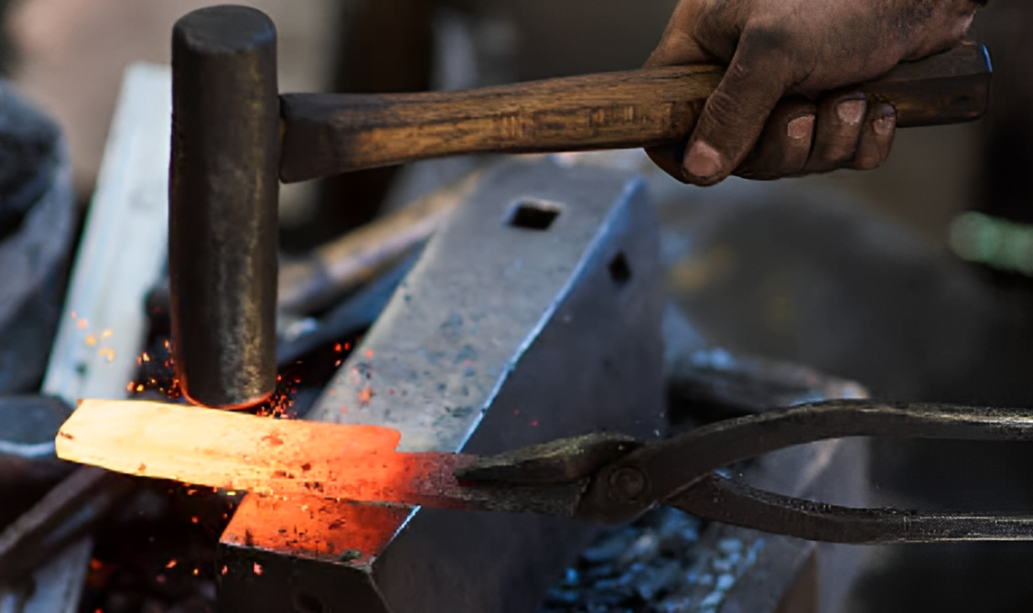
The Origin of Craftsmanship
-
Learning to sharpen knives early on is the key to unlocking a chef’s future.
Mastering the art of knife sharpening isn’t just about maintaining tools—it’s about unleashing their full potential and taking your skills to the next level. It’s a foundational practice that paves the way for excellence in cooking.
-
The condition of your tools is directly linked to your precision and ability as a chef. A well-sharpened knife effortlessly glides through ingredients, preserving their freshness and enhancing the presentation. The improved performance doesn’t just elevate the quality of your dishes—it also hones your accuracy and efficiency in the kitchen
-
“To understand your tools is to understand yourself.” Learning to sharpen knives early allows you to create a sense of harmony with your tools, transforming your workflow into something seamless and natural. This connection expands your potential as a chef and opens doors to greater opportunities.
-
To aspiring chefs and culinary enthusiasts: take the time to learn the art of sharpening. By caring for your tools, you’ll discover the joy of carving out new possibilities for your craft—and for yourself. Start sharpening, and start shaping your future.

Would you like to experience the sharpness of handcrafted knives from Sakai City, used by 98% of Japanese chefs?
Through our exclusive partnership with Shiroyama Knife Workshop, we bring you top-quality knives. In addition, we offer free Honbazuke sharpening, a protective Saya, and paid after-sales services to ensure long-term confidence.
KIREAJI's Three Promises to You
-

1. Crafted with Mastery
Each knife is meticulously handcrafted by skilled artisans in Sakai. Sharp, strong, and beautiful—every cut carries the spirit and pride of true craftsmanship.
-

2. Thoughtful Care for Everyday Use
Every knife comes with a wooden saya (sheath) for safe storage and handling. For those who wish, we also offer expert hand sharpening (honbazuke) so your knife is ready to use from day one.
-

3. Supporting a Lifetime of Use
KIREAJI knives are tools that grow with you. Through our paid aftercare services, we ensure your knife remains a trusted companion in your kitchen for years to come.













